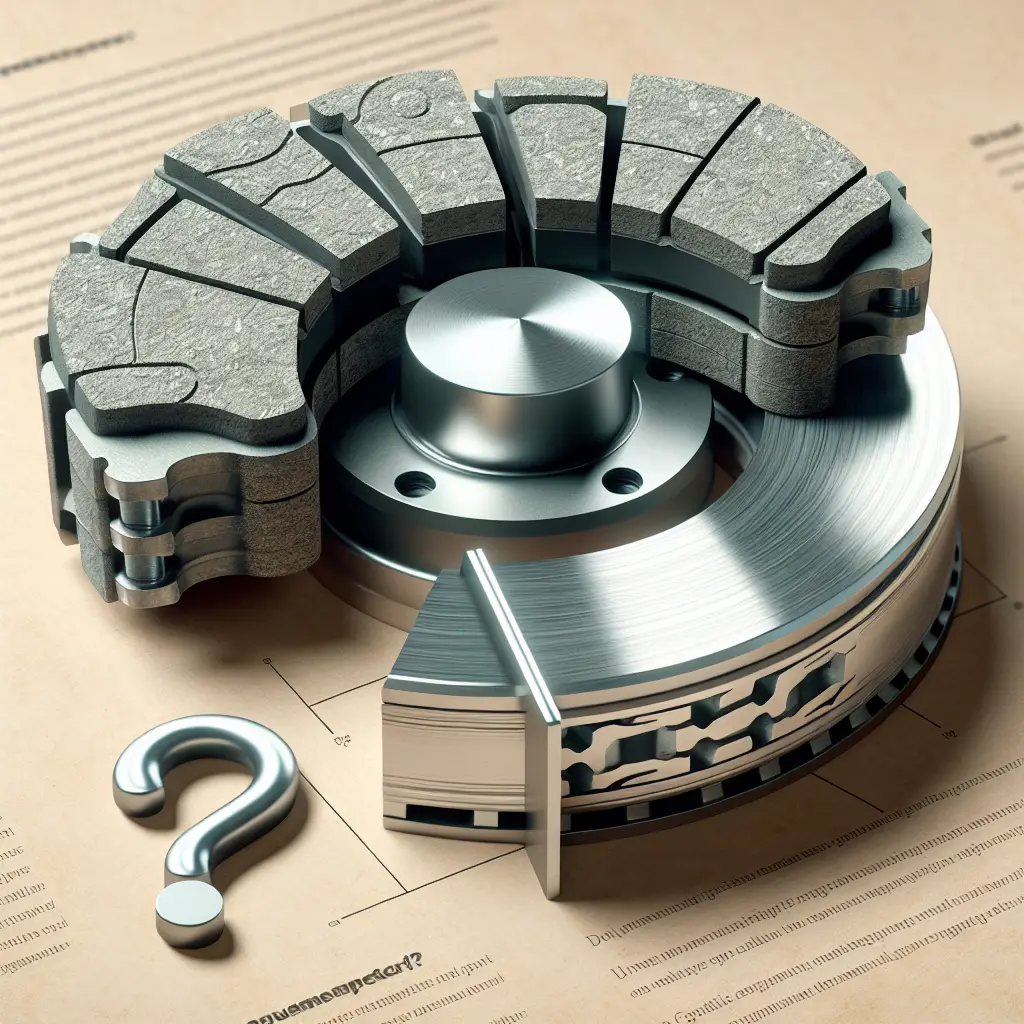Do Ceramic Brake Pads Need Special Rotors?
When it comes to maintaining or upgrading your vehicle’s braking system, one of the key considerations is the integration of various components for optimal performance and durability. Ceramic brake pads have gained popularity for their quieter operation and lower dust output, but do these high-performance pads require special rotors? In this blog post, we’ll delve into the nuances of ceramic brake pads and the compatibility with different rotor types, so you can make an informed decision for your vehicle’s brake system.
Understanding Ceramic Brake Pads
Before we tackle the question about rotors, let’s first understand what sets ceramic brake pads apart. Ceramic pads, as outlined in their name, are constructed using a mixture of ceramic fibers, nonferrous filler materials, and sometimes small amounts of metal. This composition offers several advantages:
- Reduced Noise: Ceramic pads are known for operating more silently compared to their semi-metallic or organic counterparts.
- Less Brake Dust: They produce less noticeable wheel dust that doesn’t stick to wheels, keeping them cleaner.
- Enhanced Longevity: Ceramic brake pads tend to wear down more slowly, providing a longer service life.
Given these benefits, detailed by experts from Car and Driver, it’s no wonder many car enthusiasts and everyday drivers alike are drawn to ceramic brake pads.
The Role of Brake Rotors
Rotors play a crucial role in your braking system by acting as the surface against which the brake pads clamp down to stop the car. This process generates friction and heat. The type of rotor you use can impact braking efficiency and the overall wear and tear on the brake system. The common types of rotors include:
- Blank & Smooth: The most standard type of rotors, used in the majority of everyday vehicles.
- Slotted: These have grooves that help expel gas and heat, typically found in performance-oriented vehicles.
- Drilled: These contain holes for better heat dissipation, suitable for performance but not ideal for heavy-duty use due to potential stress cracks.
- Drilled and Slotted: A combination of both designs meant for high-performance vehicles that require better heat dissipation and gas expulsion.
With this understanding, let’s move on to whether ceramic brake pads require a particular type of rotor.
Compatibility of Ceramic Brake Pads and Rotors
Good news: Ceramic brake pads are designed to be compatible with all types of rotors. However, not all combinations are created equal in terms of performance and longevity. According to The Brake Report, the key is to match the brake pad type to your driving habits and vehicle’s performance requirements.
- Everyday Driving: For most drivers, pairing ceramic brake pads with blank & smooth rotors provides a balanced combination of noise reduction, low dust, and solid stopping power.
- Performance Driving: If you have a performance vehicle or you frequently drive in a spirited manner, slotted or drilled and slotted rotors might be a better match for your ceramic pads. They will better handle the higher temperatures generated from more aggressive braking.
Do You Need to Upgrade Your Rotors?
If you’re switching to ceramic brake pads from another pad type, you don’t necessarily need to upgrade your rotors, provided that your existing rotors are in good condition—free from warping, scoring, or excessive wear. However, it’s essential to check the manufacturer’s recommendations or consult with a trusted mechanic for advice tailored to your vehicle and driving needs.
Potential Advantages of Rotor Upgrades
While not strictly necessary, there could be benefits to upgrading your rotors when moving to ceramic brake pads:
- Enhanced Performance: Performance rotors may help capitalize on the advantages of ceramic pads, such as improved stopping power and better heat management.
- Aesthetic Appeal: High-performance rotors, like drilled or slotted options, often offer an aesthetic edge, giving your vehicle a sporty look as an added bonus.
Maintenance and Longevity Tips
Whatever rotor you pair with your ceramic brake pads, proper maintenance is crucial. Always follow these tips to ensure a prolonged lifespan for your braking system:
- Regular Inspection: Have your brakes inspected regularly for signs of wear and ensure they are functioning correctly.
- Proper Bedding-In: Follow the correct bedding-in procedure for new pads and rotors to establish a uniform layer of friction material on the rotor surface.
- Avoid Overloading: Don’t exceed your vehicle’s recommended weight limit, as this can place excessive strain on the braking system inducing premature wear.
Conclusion
To sum up, ceramic brake pads do not require special rotors, but choosing the right rotor to complement your ceramic pads can enhance your vehicle’s braking performance. It’s all about matching the components to your driving style and the demands you place on your vehicle. Whether you stick with your existing rotors or decide to upgrade, make sure to follow proper maintenance procedures to extend the life of your brake system.
Remember to consult with a professional mechanic or refer to your vehicle’s manual before making changes to your brake system. For additional resources on brake system maintenance and upgrades, check out reputable sources such as Motor Trend and the Automotive Service Excellence (ASE) site for certified mechanic advice.
In the end, ensuring your car stops reliably is not just a performance concern; it is a matter of safety. By being well-informed and making the right choices for your vehicle, you contribute to safer roads for everyone.

